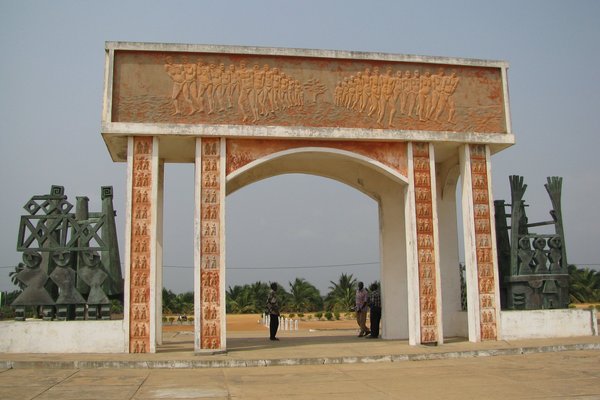Benin
Sites marquants de la Route de l’Esclave au Bénin
Site Info
Official Information
- Full Name
- Sites marquants de la Route de l’Esclave au Bénin (ID: 6512)
- Country
- Benin
- Status
-
On tentative list 2021
Site history
History of Sites marquants de la Route de l’Esclave au Bénin
- 2021: Added to Tentative List
- Added to tentative list
- 2001: Incomplete - not examined
- .
- Type
- Cultural
- Criteria
Links
- UNESCO
- whc.unesco.org
- Related
-
- happydaystravelblog.com — Travel blog walking the Slave Route in Ouidah
All Links
UNESCO.org
- whc.unesco.org — whc.unesco.org
Related Resources
- happydaystravelblog.com — Travel blog walking the Slave Route in Ouidah
Community Information
- Community Category
- Human activity: Transport and Trade
Travel Information
Recent Connections
News
No news.
Recent Visitors
Visitors of Sites marquants de la Route de l’Esclave au Bénin
Community Reviews
Show full reviewsSolivagant
Sites marquants de la Route de l’Esclave au Bénin
Sites marquants de la Route de l’Esclave au Bénin (On tentative list)

Back in 2008 we gave a pretty thorough visit (including walking the entire "route") to the T List site which was then called “La ville d'Ouidah : quartiers anciens et Route de l'Esclave”. It has since “morphed” into something larger (with a completely new Ref No) via the addition of 4 sites “upcountry” from Ouidah (to make 8 in all) and a new title “Sites marquants de la Route de l’Esclave au Bénin”. We have only visited 1 of these additions but, in this review, as well as covering the original locations, I will share what I have been able to discover about the additions, as part of a wider objective of trying to understand the entire site as it may now be nominated.
The original site, placed on Benin’s T List in 1996, lacked any description or location details but the assumption must be that it covered (at least) the 4, now separately identified, locations in/around Ouidah. I suspect that every visit will commence at the “Fort Portugues” (incorrectly described in the UNESCO description as being in Ketou province). Strictly this isn’t a part of the “slave route” which relates to the c4km "path" along which slaves are supposed to have walked to their embarkation for the Americas having reached Ouidah and been sold for onward transport. But the Fort is clearly a focal point for any history of Slave trading in the Area (See Wiki). Indeed it has, for many years …
Keep reading 0 comments
